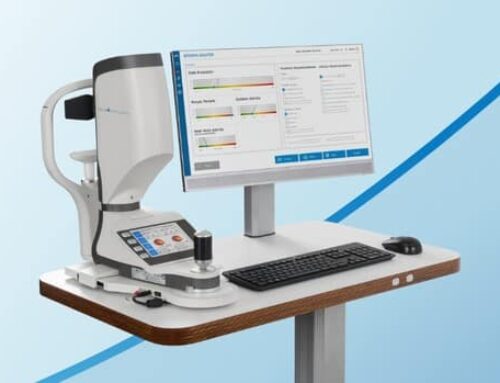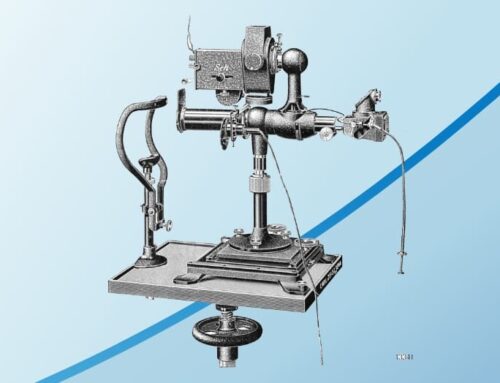Glaucoma is a condition effecting the eye where the optic nerve is damaged. The optic nerve is at the back of the eye and connects the eye to the brain. The optic nerve damage is caused by fluid building up in the eye, which increases the pressure inside the eye. If left untreated glaucoma can cause blindness or vision loss.
How to test for glaucoma
Glaucoma can be detected easily by opticians during a routine eye test. You should have a routine eye test at least every 2 years.
There are 5 different types of tests that can be done for glaucoma which are[1]:
- Tonometry
- Ophthalmoscopy
- Perimetry
- Gonioscopy
- Pachymetry
Tonometry is a diagnostic test that measures the pressure inside your eye, which is called intraocular pressure (IOP). The higher the pressure inside the eye the more likely the risk of glaucoma. A healthy eye should have pressure between 10-21 mm Hg.[2] A tonometer is used to measure this, which is a small device that can be handheld.
Ophthalmoscopy is a test that allows your ophthalmologist, or eye doctor, to look at the back of your eye using an ophthalmoscope and a light source. They will perform a retinal examination and be able to see the retina and back of the eye for signs of any problems. [3]
Perimetry uses visual field testing to test for glaucoma. The test is done by looking into a perimeter. Which flashes lights. You press a button each time you see a flash. The computer records the spot of each flash and if you pressed the button when the light flashed in that spot. By doing this you can find any vision loss of blind spots. This is often an early sign of glaucoma.[4]
Gonioscopy measures and looks at the internal drainage system of the eye, which is called the anterior chamber angle. The “angle” is where the cornea and the iris meet. The fluid here is what can cause pressure to the eye. [5]
Pachymetry measures the thickness of your cornea. A pachymeter is placed on the front of the eye (the cornea) to measure its thickness. Pachymetry can help diagnose glaucoma, because corneal thickness has the potential to influence eye pressure readings.[6]
References
[1] https://www.glaucoma.org/glaucoma/diagnostic-tests.php
[2] https://www.webmd.com/eye-health/occular-hypertension#:~:text=Eye%20pressure%20is%20measured%20in,greater%20than%2021%20mm%20Hg.
[3] https://www.healthline.com/health/ophthalmoscopy
[4] https://www.healthlinkbc.ca/medical-tests/hw155215
[5] https://www.glaucoma.org/treatment/gonioscopy-what-is-it-and-why-is-it-needed.php







